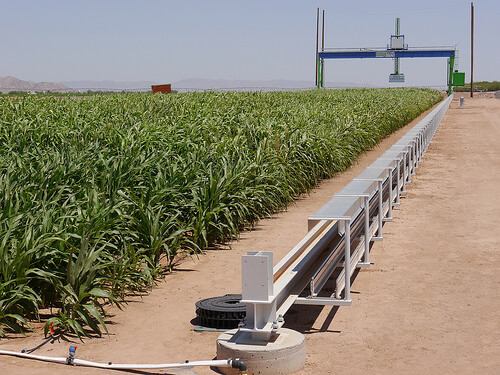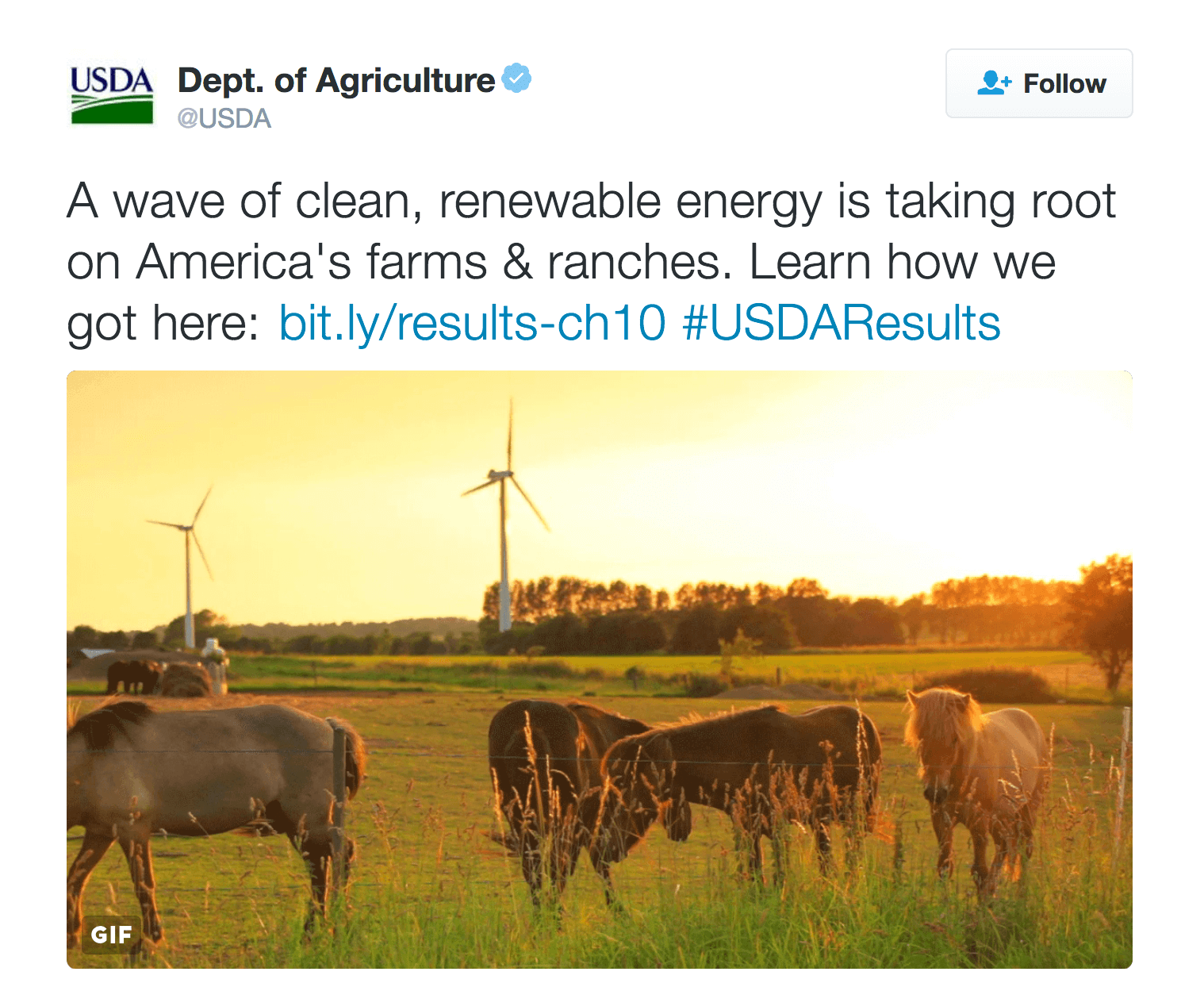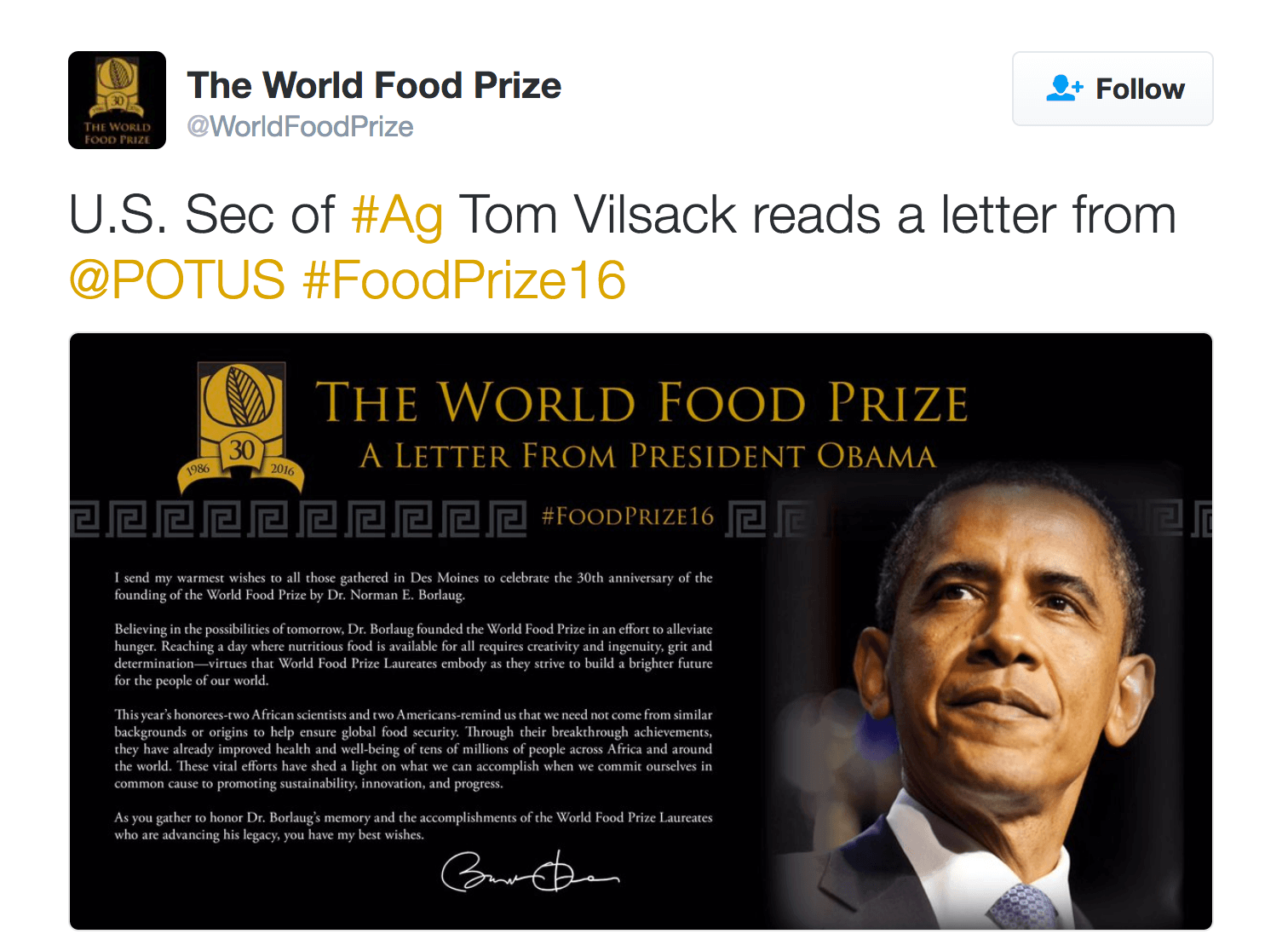




Rural Americans are recognized the world over for their hard work and their tremendous resilience. For 150 years, USDA has served to support these qualities, offering a hand to farmers, ranchers and small businesses when they need it, and helping them look toward a stable economic future for their businesses.
In Isom, Kentucky, rural grocery store owner Gwendolyn Christon has lowered her store’s energy use by about 35% thanks to a USDA grant to make updates to her aging equipment and install energy efficiency solutions. But that’s not all the grant has done. The improvements have created more floor space allowing her to sell new lines of products. Today, she has realized a 6% increase in sales, and the greater variety provides her customers with more options close to home, ensuring their hard-earned money can be spent locally. You can listen to Gwen’s story here.
USDA is also strengthening rural families and communities by supporting a host of burgeoning opportunities for American agriculture. Last week, a new report by the USDA's Office of the Chief Economist, showed that continued growth of the U.S. dairy sector will be largely contingent on trade. Free trade agreements have contributed to the growth in U.S. dairy exports and helped to address barriers that disadvantage U.S. products in overseas markets. U.S. dairy exports to free trade agreement partners grew to $2.8 billion in 2015, driven by lower trade barriers and increased U.S. competitiveness. To keep up this growth, the Trans-Pacific Partnership (TPP) could create an additional $150 to $300 million in annual U.S. dairy exports. For more information on TPP, visit www.fas.usda.gov/topics/trans-pacific-partnership-tpp.
Join us throughout the month of October as we tell the story of a proud legacy of rural innovation and its contribution to a new generation of renewable energy and biobased products; increasing American energy security, giving American consumers environmentally friendly choices, cutting our carbon pollution, strengthening America’s economy and with it the small towns and rural communities that so many call home. Follow along on usda.gov, on the USDA blog and by using #USDAResults, or catch up on Chapter X on our Medium site.



Throughout the month we’ll tell the story of a proud legacy of rural innovation and its contribution to a new generation of renewable energy and biobased products.

ARS scientists and their partners are using a giant electronic scanner in Maricopa, Arizona to study the growth characteristics of sorghum plants as part of a project designed to speed biofuel crop development.

A Northern Bedrock Historic Preservation Conservation Corps crew member completes initial shaping on a sill log on the 1936 Tafte Ranger dwelling on the Superior National Forest in Minnesota. Eleven crew members worked more than 1,500 hours during the 16-day project to project.

It takes time, patience and a committed partnership, but seeing thriving forests of longleaf pine trees return to Alabama’s Gulf Coast is well-worth the wait.

RCPP Benefits Longleaf Ecosystem in Alabama
It takes time, patience and a committed partnership, but seeing thriving forests of longleaf pine trees return to Alabama’s Gulf Coast is well-worth the wait.
Team Up and Show Your Spirit for School Meals!
The school nutrition community is celebrating National School Lunch Week from October 10-14. This year’s theme “Show Your Spirit” is all about encouraging parents, students and school officials to show their spirit for school lunch.
The Farmers Screen
Nobody wants fish to get stuck in irrigation pipes. Not the public; not the farmers; especially not the fish. But with more than 70,000 irrigation diversions tapping into Oregon’s rivers and streams, the concern is real.
US Forest Service Helps Educate Students at World’s Largest Conservation Event
Approximately 180 middle and high school students joined Smokey Bear, U.S. Forest Service staff and a host of other conservation-focused professionals from around the world for Student Day at the Hawaiʻi Convention Center in Honolulu.
Innovation Grows Local Food Economies in New York State
Consumers expect a lot from local food. They want it to be fresh, healthy and raised responsibly. They want it to be affordable and convenient. And, they want their purchase to support local farmers. At first glance these goals seem at odds with each other. How can local food improve farmers’ bottom lines without being expensive? Is it possible to efficiently deliver local food to (mostly) urban consumers while still supporting (mostly) rural farm economies?
Make a Cafeteria Date to Eat a Healthy Lunch with Your Child at School
More than 50 million children around the country attend schools that participate in USDA’s National School Lunch Program and School Breakfast Programs. And not only are their meals full of nutritious ingredients – with 99 percent of schools nationwide reporting that they are successfully meeting the updated nutrition standards – their entire learning environment fosters healthy habits now and throughout the rest of their lives. During National School Lunch Week 2016, USDA and partners like the Robert Wood Johnson Foundation, are celebrating this progress.
US Forest Service Celebrates Historic Preservation Milestone
It takes a special person to spend two weeks of hard-earned vacation time delicately slicing through layers of soil to unearth the past as part of an archeological dig or hand sawing logs for re-birth of a worn-down historical cabin.
Celebrating Stakeholder Diversity is Essential for Success
On behalf of the Agricultural Marketing Service’s National Organic Program (NOP), please join us as we continue celebrating National Hispanic Heritage Month.
El Celebrar la Diversidad de Participantes es Esencial Para el Éxito
De parte del Programa Nacional Orgánico (NOP, por sus siglas en inglés) del Servicio de Comercialización Agrícola (AMS, por sus siglas en inglés), por favor, únase a nosotros a medida que continuamos celebrando el Mes Nacional de la Herencia Hispana.
NIFA Programs Key to Reducing U.S. Household Food Insecurity
The National Institute of Food and Agriculture (NIFA) opened its doors on Oct. 1, 2009, created by the 2008 Farm Bill. NIFA begins its eighth year as USDA’s premier extramural agricultural science agency by examining its role in helping reduce hunger in the United States.
A Giant Crop-Scanner Is Turning Heads in Arizona
With its 30-ton frame and 50-foot-high catwalk, the newest scanner for measuring crop plants in Maricopa, Arizona, can be seen for miles. It looms over a tract the length of two football fields and moves along steel rails.
Celebrating Progress: National School Lunch Week 2016
Last week, children from more than a dozen schools and child care centers across the nation joined First Lady Michelle Obama for her final harvest of the White House garden. This event was more than just photo ops and shaking hands; kids got their hands dirty, harvesting the produce they later used to prepare a healthy meal.

Forest Service Role In National Historic Preservation Act
The National Historic Preservation Act turns 50 years old this week, with US Forest Service teams conducting preservation projects in our nation's forest. (Rod Bain and Troy Ferrone of the US Forest Service)
Volunteer Efforts Preserve History In Our Nation's Forests
Volunteers are a key part of US Forest Service efforts to preserve historical sites on our national forest lands. (Rod Bain and Allison Thornton of the Appalachian Forest Heritage Area)
USDA Releases New Study on Effects of TPP on U.S. Dairy Operators
The USDA has a new study on how the Trans-Pacific Partnership deal would affect the U.S. dairy industry. (Gary Crawford and Rob Johansson)
USDA Buying More Surplus Cheese
The U.S. Department of Agriculture is buying more surplus cheese to help boost prices for dairy producers. (Gary Crawford and Rob Johansson)
World Food Prize Week Underway
The annual celebration and award of the globe's top prize for food and agriculture includes participation from USDA. (Rod Bain and Foreign Agricultural Service Administrator Phil Karsting)
Actuality: Issues and Plans To Combat Global Food Insecurity
USDA Deputy Under Secretary Alexis Taylor notes some strategies and issues that partners in battling global food insecurity are discussing.

Vilsack: Embrace science to address global food security (Agri Pulse)
Surrounded by international leaders focused on global food security, Agriculture Secretary Tom Vilsack said that one of the biggest concerns he has about addressing future food challenges is “our ability to embrace science.” “Underlying the debate over biotechnology has been a distrust and uncertainty about the science,” Vilsack told attendees at a three-day international symposium here - the Borlaug Dialogue - which regularly draws over 1,200 people from 60 countries to discuss cutting-edge issues in global food security.
Letter: Trans-Pacific Partnership vital to success of Illinois farmers (Northwest Herald)
As a farmer in Kane County, I know just how important it is to find new markets for the corn and livestock farmers grow in this area. That’s why we need our leaders in Washington to support trade agreements such as the Trans-Pacific Partnership. TPP is a trade agreement between the United States and 11 countries along the Pacific Rim, representing 40 percent of the world’s economy. It will break down trade barriers and allow farmers in Illinois to compete on a level playing field in one of the world’s fastest-growing regions.
Kenneth Wunderlin: TPP is a step forward for Wisconsin dairy farmers (La Crosse Tribune)
The national debate over trade has now reached dairy farms throughout Wisconsin. Some have discussed the impacts via anti-trade rhetoric, including in the column “Trade deal poses threat to dairy farmers” (July 20 Tribune). However, looking closer at these impacts reveals that trade has been positive for dairy farmers in Wisconsin and across the United States.
How TPP Critics Muddle Facts, Fictions, and Unfounded Fears: A Point-by-Point Analysis (ITIF)
Not all criticisms of the Trans-Pacific Partnership (TPP) should be treated equally. It is understandable and appropriate that the TPP has generated heated debate. As policymakers evaluate the debate surrounding the agreement, there will be critics who point out where the deal falls short of the ideal, but who, overall, rightly believe the TPP is a high-quality, groundbreaking trade agreement that represents the sensible next step toward a more globally integrated and prosperous economy.
USDA to Buy Additional $20 Million of Cheese (Wall Street Journal)
U.S. agricultural officials stepped in to help dairy farmers for the second time in less than three months, pledging to buy another $20 million worth of cheddar cheese as prices remain the lowest in years. Dairy farmers are on track to produce the most milk ever this year. In August, they urged the U.S. Department of Agriculture to support the market by buying as much as $150 million worth of products for food pantries and other government programs. The USDA initially said it would buy $20 million worth of cheese, or around 11 million pounds, two months ago.
Cheese to Be Propped Up by Second USDA Purchase (Bloomberg BNA)
The Agriculture Department is going back for seconds. The agency is buying up as much as $20 million in surplus cheese from U.S. dairy producers, according to an Oct. 11 announcement that marks the second round of cheese purchases by the USDA in two months. In August, the department bought up about $7 million worth of cheese. The cheese buy-up signals the Agriculture Department's continued effort to serve as a backstop for farmers hit by low commodity prices over the past three years.
A growing workforce: Delaware celebrates National Manufacturing Day (Delaware Public Media)
Sen. Chris Coons was joined by U.S. Department of Agriculture Acting Deputy Secretary Michael Scuse at Polytech. USDA Rural Development grant dollars help fund the training programs there. "If you look at our proximity to the major cities within the region, we can manufacture products here with the great workforce we have," Scuse said. "But we can then distribute those to the cities that are close by, so that gives us a huge advantage." Scuse praised Polytech for its work training adults seeking to enter the manufacturing workforce.
USDA grant to help veterans, minorities to farm (The Kearney Courier)
The U.S. Department of Agriculture awarded a $179,614 grant to the University of Missouri to support efforts to help to veterans, Latinos, women and socially disadvantaged to farm or go into agribusiness. The grant will fund eight workshops over the course of a year, said MU Extension health and safety specialist Karen Funkenbusch. MU Extension specialists will offer Understanding the Alphabet Soup of USDA Programs and Grow Your Farm near military bases and StrikeForce zones, locations USDA has identified as high-poverty areas. The MU sessions explain available USDA resources and offer agriculture business education.
USDA announces efforts to diversify U.S. Ag workforce (Farm Futures)
USDA announced increased federal and private-sector support to expand and diversify the U.S. agricultural workforce by increasing opportunities in education, research and outreach. "The face of American agriculture is changing," said Agriculture Secretary Tom Vilsack. "Nearly 10% of U.S. jobs are related to agriculture and the increasingly complex nature of production requires more training and education in science, technology, engineering and mathematics—the STEM fields—to stay competitive and meet the needs of a growing world for food, fuel and fiber.

 



|

